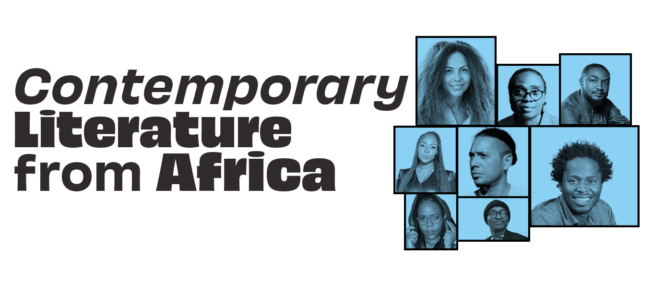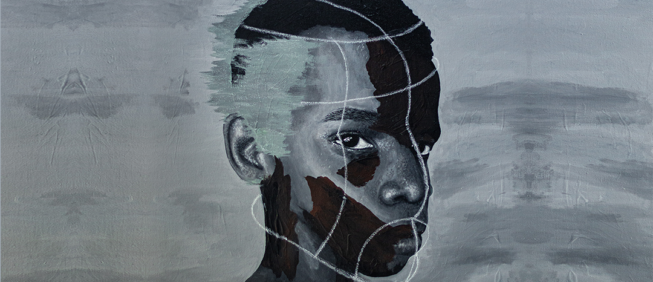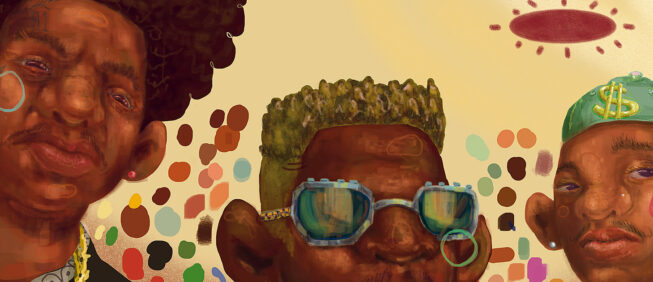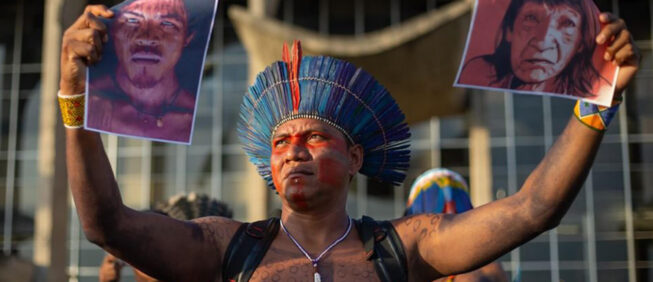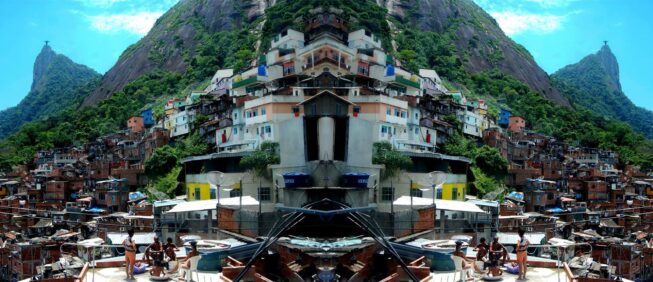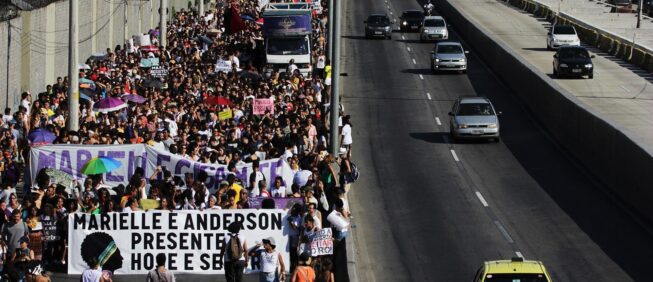Revisiting the ‘Theology of the City’ in the Perspective of Maré, Rio de Janeiro
Graham Gerald McGeoch
| Brazil |
translated by Dani Lauria
Abstract
Beginning with a lived experience in the Complexo da Maré favelas, this text revisits the theology of the city developed by liberation theology. The influences of José Comblin and Juan Luis Segundo are noted, discussed and questioned in light of processes of urbanisation and in dialogue with social science literature about Maré. The article points towards the need for reconsidering how to do theology in a favela independently of the State or the Church (a foundational category for the liberation theology) and presents the possibility that social movements, NGOs and public authorities have succeeded the pastoral action of churches and religious institutions in the formation of a democratic urban imaginary that resists the mass production of consumers and instead struggles for human rights.
There are many ways to enter a favela. Most citizens enter by public transportation, on foot, or by motorcycle. Some might even go by car, navigating the narrow streets. For public agents – policemen, health system professionals, social workers, and teachers – going into the favela will depend on the state of their relationships with the people who live there. For example, policemen arrive at Maré’s police department through a gate connecting to the Linha Vermelha – a main highway in Rio de Janeiro, which connects the city centre to the International Airport and to the Baixada Fluminense lowlands – and traverse the favela in armoured cars (called caveirões [meaning “big skulls”] by the local population (Sousa Silva, 2015, 181)).
There are many ways to enter a favela. I would like to ponder how to enter a favela, specifically the neighbourhood-favela Maré, in Rio de Janeiro, theologically. Now, for many readers, mentioning the word “theology” may conjure up images and association with the word “church.” And there are indeed many churches inside Maré, as well as widespread State presence. Despite this fact, a favela is not usually defined by the presence and structures of Church or State.
According to Kátia da Costa Bezerra (2017), the Brazilian Institute of Geography and Statistics (Instituto Brasileiro de Geografia e Estatística, or IBGE) defines a favela as:
an irregular settlement in subnormal agglomerates… lacking in essential infrastructure, services and legal standards (2017, 1).
This official State definition – the IBGE is a federal agency – has been fundamental in creating negative images of the favelas in Brazil. The official definition starts with the assumption of absence in a favela. We must also remember that the IBGE received its legal status during the “Estado Novo” phase of the dictatorship in 1938. And though the official definition is not, as Kátia da Costa Bezerra points out, broadly accepted by researchers, it has a strong influence on matters related to favelas in Brazil. We should add that the definition, given by an institute that received its legal statute during a dictatorship, isn’t democratic either.
The favela resists definitions imposed by dictatorships and authoritarian State structures. James Holston, in his observations about citizenship in São Paulo’s favelas, writes:
I argue that in the development of the autoconstructed peripheries, the very same historical sites of differentiation – political rights, access to land, illegality, servility –fuelled the irruption of an insurgent citizenship that destabilizes the differentiated. Although these elements continue to sustain the regime of differentiated citizenship, they are also the conditions of subversion, as the urban poor gained political rights, became landowners, made law an asset, created new spheres of communal participation, achieved rights to stay in the city, and became modern consumers. In such ways, the lived experiences of the peripheries became both the context and the substance of a new urban citizenship (2008, 9)
This autoconstructed space that destabilizes, and at the same time focuses on lived experiences, offers another description of favelas. Holston’s definition perhaps offers a more positive image of favelas, and definitely offers a more democratic approach to understanding them. For Holston, the favela is a place of subversion and the construction of political rights --one that leads to new forms of citizenship and participation.

Presenting theology
If favelas resist definitions imposed by dictatorships and authoritarian State structures, theology also resists a definition by (and in association with) authoritarian Church structures (and academic disciplines). Liberation theologian Marcella Althaus-Reid, who writes independently of both Church and State authoritarian structures, affirms:
since the concept of poverty used by the liberation theology came from dependency theory, the popular theologian was defined as independent of church and state structures of control. This is the meaning of the concept of the theologian living among the poor (2004, 130).
Such resistance to definitions imposed by both the dictatorships and authoritarian church and state structures, such independence in living and working and reflecting upon favela residents’ lived experiences, all of this offers liberation theology a doorway into the lives and struggles of the favela. Mario Aguilar noted that religious changes in 20th century Latin America reflected the social changes of that same period in the region. The influence of itinerant preachers (a consequence of migration waves from the countryside to the cities), the great influx of evangelical congregations reflecting unstable lives, and the dissemination of migrants who belong neither to rural communities nor to the urban centre, paves the way for marginalized people to join local socially oriented political parties, small churches with Pentecostal preachers, or base ecclesial communities (2007, 3). In addition to the groups included in Aguilar’s description, migrants also join social movements and human rights NGOs. Aguilar’s observation is relevant because it teaches us that a favela is neither a rural community nor an urban centre.
The relevance of Marcella Althaus-Reid’s observation about theology’s independence from Church and State, paired with Aguilar’s observation about the participation of favelas beyond rural and urban imaginaries, helps us identify a possible theology of the favela. This is not, however, a theology defined by its relation to small Pentecostal churches, base ecclesial communities or Roman Catholic Church parishes. Rather, it is a theology in dialogue with the freedom lived and experienced in the favela in the construction of a social imaginary -- one that gels with this new urban environment. Theology in a favela like Maré can be produced by social movements and NGOs as much as by small Pentecostal churches and base ecclesial communities. They all are, in a certain way, independent from Church and State, and part of the new spheres of public participation in the favelas.
Presenting liberation theology and the favela
Liberation theology has long observed and monitored the profound impacts of rapid urbanization in Latin America. Among the most influential works on the topic are: Teologia da Cidade by José Comblin and Ação Pastoral Latino Americana: seus motivos ocultos by Juan Luis Segundo. This text will focus on the developments these works provoked, keeping in mind that these are not the only references or books prepared by liberation theologians about theology and urban spaces. We could just as easily start from Onde Dormirão os Pobres, by Gustavo Gutiérrez or Doing Theology in a Revolutionary Situation by José Miguez Bonino or A Theology of Human Hope by Rubem Alves, just to name a few. I focus on Comblin and Segundo because they were deeply influential in the development of liberation theology, principally in their approach to theology, but also because they offer diverging theological propositions in regards to rapid urbanization in Latin America.
José Comblin was profoundly influential on theology and on the pastoral practice of the Brazilian Church. He was born in Belgium and came to Latin America in 1958 to teach theology in Campinas, São Paulo. During the Brazilian dictatorship, he sought exile in Chile, and in 1965 moved to Recife, where he taught theology and served as Dom Hélder Câmara’s principal advisor. He was deported from both Brazil (1972) and Chile (1980) by those countries’ military regimes, and in 1971 he was elected professor in Louvain, Belgium. He continued. however, to live and work in the Northeast of Brazil, where he died in 2001, in the city of Salvador.
Teologia da Cidade was originally published in French in 1968, three years before Teologia da Libertação by Gustavo Gutiérrez, usually considered the most common starting point for liberation theology. Teologia da Cidade was published ten years after Comblin moved to Latin America and includes thoughts on the processes of urbanisation in Latin America. It was translated into Spanish in 1972 and into Portuguese in 1991.
Comblin begins with the question: “What can a theologian say about the city?”(1991, 7). He points out that contemporary theological literature does not address the subject. At the same time, he reminds us that historically both Thomas Aquinas and Saint Augustine addressed the theme. Aquinas and Augustine frequently place the earthly city in opposition to heaven; and therefore historic theology does little to illuminate the human and earthly realities that Comblin seeks to address in his book. He opens his book by using social science to describe the growing phenomenon of urbanisation (1991, 10). He also emphasizes a trend that became commonplace in liberation theology:
It will help us to confront the Gospel, not with abstract signs, but with History itself. Instead of studying the relationship between the Gospel and the ideas of Science, Technique, Democracy, etc, it is better to watch Christianity react amidst all these things, taken in its concrete realization. (1991, 12)
According to José Comblin, the theological problem is not restricted to relating Christian doctrine to an idea of the city. The task is more complex. It is requires us to ponder theology from the context of the city. One fact he points out from the start, and that permeates theology to this day, is how frequently urban parishes were simply rural parishes replicated in the city. In other words, there is an absence of (theological) thinking created in the city to develop a pastoral practice for the city. In the final part of the book, Comblin offers possible ways of taking charge of this task, that is, thinking theologically about the city. He starts by noting that Sociology believes urbanisation causes a process of de-Christianization (1991, 266).
This thesis, drawing from The Secular City (1965) by Harvey Cox as its reference, is influential in theology to this day. Many leaders and theologians base their negative opinions of cities on this idea. It can even be said that that is the case with Pentecostal churches, which see the city as a threat to the Christian faith. There is an internal discussion in liberation theology about the typology of Pentecostal (and neo-Pentecostal) churches. José Miguez Bonino situates Pentecostal churches within Latin American Protestantism, while still recognizing the diverse forms of Pentecostalism (2003, 54). Julio de Santana offers a similar reading. In his understanding, Pentecostalism, despite being a decisive mark for evangelical (or protestant) churches in Latin America, is an expression of the charismatic movement some churches inherited from 16th century reforms (1991, 280). In Waldo Cesar and Richard Shaull’s classical study Pentecostalismo e o Futuro das Igrejas Cristãs (1999), the authors point to a typology that sees Pentecostalism (in its diverse expressions) as the fourth long phase of the Church after the Reform, missionary, and ecumenical movements (1999, 25). More recent studies on global Christianity offer Pentecostalism its own typology, separate from Roman Catholicism, Orthodoxy and Protestantism (van Beek, 2009, xv). I favour Miguez Bonino’s and Santana’s theories because I believe that, from a theological point of view, the influence of Protestantism on Pentecostalism is undeniable. It is therefore important to recall the “theology of the meaning of the city,” by Frenchman Jacques Ellul, which theologically structures the negative perceptions of churches: “In the city, we are captives... the church is in captivity. And we know this is the same essential objective as the city’s – to make all human beings captive” (1998, 96). Ellul’s theology has affinity with a perspective elaborated by Juan Luis Segundo on the influence of social consciousness in the urban area, that the city influences our way of thinking and living in it. We will return to this point later on.
Returning to Comblin, he cares little for this sociological aspect of de-christianization or secularization of the urban world, or even for the protestant theological bases of city churches. To him, the thesis of de-christianization implies that – either in the city or in the rural communities – people were once christianized. What can be seen, from Comblin’s point of view, is that during the rapid process of urbanisation in Latin America, the practice of Christian rituals diminished, and the absence of active participation in the church or parish increased among the population. Comblin, like other theologians, asks himself if these external signs in fact express a recognizable christianization, followed by the de-christianization, of the people.
Comblin presents the case of rural workers that migrated to the city and became factory workers (1991, 270). A church that only replicates the rural community is absent from the places where this working class gathers. Neither the Church nor the State is able to, at first, integrate these migrants into their structures. Therefore, an urban theology must take a different path from the rural past. Theology needs to contemplate the human action in the city rather than replicate the rural world.
Liberation theology has not always followed José Comblin’s advice. As a theology, it is robust in its reflections on those rural workers that migrate (for economic reasons) to urban areas, becoming the working class. Pastoral practice in base ecclesial communities has frequently attempted to recreate the absent rural world in the life of the economic migrant. This involves reading the Bible as a departure from a garden (Eden), and travel through the desert (unrooted urban life) towards the new city (Jerusalem). It offers “regional” songs and chants, most of them based in folkloric music, and grounds itself in rural festivities such as festas juninas [festivals of St. John], Carnival, and pilgrimages. But what becomes, then, of those born in the favelas without reference to the absent rural world? If theology doesn’t walk the path outlined by Comblin in his book, it remains a rural theology replicated in the city. It may offer comfort to the first generation of urban migrants, but will not bring the achievement of liberation to the new urban space.
It should be noted that Comblin uses the word “city” to refer to urban centres and peripheries. The fact that his line of theology follows the experiences lived by migrant rural workers and working class people shows that “city” is a word that can be retaken by favelas to describe their reality. A city is a diverse space and its people have specific experiences in it, but, for Comblin, the favela is also the city.
Juan Luis Segundo is another theologian who had a profound influence on liberation theology. He was born in Uruguay in 1925 and was a Jesuit priest and a theologian. He studied in Louvain and Paris, where he met Gustavo Gutiérrez. He founded the Peter Faber Centre in Montevideo, a study centre for theology and social sciences, which the local military government closed in 1971. Segundo then began teaching at Harvard, the University of Chicago, as well as many universities in Latin America. He died in 1996. His line of theology interacts broadly with the social sciences, but Segundo is better known for his work Liberation Theology (1975). The book begins with a methodological step that recognizes that theology comes second. The experiences lived by the people, and specifically “by the poor,” come first. Theology must therefore use the social sciences to shrewdly approach such lived experience, and theological thinking about those lived experiences must be mediated by the social sciences. Segundo’s method is frequently known as “Segundo’s hermeneutic cycle.”
Juan Luis Segundo used this approach in a former, lesser-known work about the pastoral action of the Latin America church. Ação Pastoral Latino Americana: seus motivos ocultos, was published in Spanish in 1972, and in Portuguese in 1978. In this book, Segundo debates the challenges to pastoral work in Latin America in light of the “changing society” (1978, 7). Mario Aguilar would echo this thought almost 30 years later, writing that the religious changes in Latin America are a consequence of social changes in the region during the 20th century. Segundo points to three major changes that call into question the pastoral action of the church, and, in turn, the church’s theology.
First, Segundo notes that migration – the main force of urbanisation in 20th century Latin America – rapidly changed the continent from a society with a rural majority to one with an urban majority. Furthermore, most of this urban population abandoned the continent’s rural areas only recently. The effect of this is an “uprooting” that disorients and provokes insecurity among those recently arrived in urban environments (1978, 10). Until this point, his analysis agrees with Comblin’s.
Second, Segundo identifies the development of mass communication media and changes in social consciousness as major influences on urban populations and on the church’s theology. The development of social communication in urban areas produces a “society of consumption” (1978, 14) that masks the complexity of the urban environment. Social communications hide the fact that urban inhabitants don’t participate “according to the same universal values and with the same conception of the world” (1978, 16), and privatize or relativize “radical values and options” (1978, 17).
In other words, according to Segundo, the urban environment is informed by social communications to create consumers, not critical thinkers. Additionally, the change from a rural community, uprooted and disoriented, to an urban mass of consumers, provokes a crisis of social consciousness. The lived experiences of those recently arrived in the city don’t live up to the promises made by the society of consumption. According to Juan Luis Segundo, theology and politics fill this gap. In practical terms, churches, social movements and civil society organizations attempt to help urban populations replace or restructure their rural consciousness with an urban social consciousness.
Both Comblin and Segundo use the social sciences in their theological analyses of the city. Comblin points to the matter of overcoming the church’s and migrants’ will to replicate rural life (structures and imaginary) in the context of urban life. At the same time, he has a positive view of the city, starting from peripheries. He doesn’t postulate an opposition between “city” and “periphery,” but rather sees the lives of migrant rural workers and the new urban working class as integral experiences for the city itself. He urges theology to base its reflection in these two kinds of experience.
Juan Luis Segundo also agrees with Comblin in his description of the place of theology in the city and recognises the same phenomenon in the formation of urban life. Segundo, though, questions more deely the construction a city’s social consciousness. Differently from Comblin, Juan Luis Segundo identifies both the influence of the lost rural imaginary and the urban process of creating consumers as challenges to theology. In other words, Segundo wants theology to surpass the rural structures and rural imaginary, but also to fight the city’s element of desire, brought about by the mass media of social communication and the creation of consumers. The distinction is small, but while Comblin wants the citizen to live in the city with urban structures and imaginaries, Segundo wants the citizen to live in the city, conscious of urban structures and imaginaries. There is a difference between a theology of comfort or consolation and a liberation theology.
Maré and the liberation theology
There are many ways of describing a favela like Maré. Anthropologist Polly Wilding (2014) describes the topography, which differs from the popular image of a favela in Rio de Janeiro: Maré is located in a flat area in reclaimed swamp land. Migrants built the favela on their own initiative. In the early 2000s, Maré had running water, electricity and sanitation, 16 schools, 11 NGOs, 11 health centres, 68 churches and some state social projects (2014, 230).
Alice Louisa Allen, an expert in contemporary Brazilian visual culture, describes the favela’s history and politics in her book Shifting Horizons: urban space and social difference in contemporary Brazilian documentary and photography (2017). The favela serves as an imaginary for romantic versions of popular culture – from the place where samba was born to the icons that make up a cohesive national identity – and as explanations for (dictatorial and democratic) modernization projects in Brazil (2017, 173). She points out that the word favela – hard to translate to English – has synonyms used by its inhabitants: “community,” “popular territories” and “popular spaces” (2017, 114). She notes that the word “favela” comes from the time of the Canudos War (Guerra de Canudos), when soldiers returned from Brazil’s Northeast and occupied a number of Rio de Janeiro’s hills as the State refused to recognise their rights or pay them for their services. (2017, 115). The soldiers christened their space Morro da Favella (Favella Hill) because it reminded them of the sertão and its biodiversity (2017, 115). Echoing Juan Luis Segundo, Allen discusses the role of the media (social communications) in creating negative images of favelas through the “criminalization of its inhabitants” (2017, 115) and through the strength of the middle class’ feeling of security in interpreting and assigning the place of the favela in the city (2017, 115).
Eliana Sousa Silva, researcher and director of a NGO in Maré and former resident of Maré, offers a succinct description of the history and development of the neighbourhood-favela Maré in her book, Testemunhos da Maré (2015):
"Maré is a complex of 16 favelas where approximately 140 thousand people live, spread from the area between Cajú and Ramos along Avenida Brasil, the highway that connects the city centre to the peripheral area of Zona Oeste of Rio de Janeiro city. Its formation recounts a long process of urban change, especially during the second half of the 20th century. This change occurred mainly because of the increase in industrial activity in the city and large infrastructure projects, the consequence being the arrival of a large population from the Northeast in search of work and better life conditions. The construction of Avenida Brasil -- the longest highway in the city -- beginning in 1939, was one of the determining factors in Maré’s formation. Many of those who worked on the highway’s construction ended up remaining there following the it’s inauguration in 1946. (2015, 45)".
Maré appears as a favela in an urbanisation process much like the one described by theologians Comblin and Segundo. Northeasterners (rural workers) migrate to the South seeking work and become the new working class through their involvement in large infrastructure projects. However, that is only the beginning. And, unfortunately, Comblin’s theology of the city and Segundo’s liberation theology both get stuck discussing primarily this moment, and their lines of theology don’t keep up with subsequent phases of places like Maré.
Eliana Sousa Silva describes other urban changes in the 20th century that affected Maré and its inhabitants:
"Developed in the final stage of the military dictatorship, the urban intervention initiative planned the removal of certain favelas, a transferring of the favelas’ population to habitational complexes built by the government, and the urbanisation of the remaining communities, in addition to a sanitation of the region surrounding the Guanabara Bay. The high level of authoritarianism in the definition and implantation of those actions generated intense criticism and resistance from local community groups (2015, 45)."
This second moment anticipates what Juan Luis Segundo calls social consciousness in the urban area. The favela which is independent from Church and State structures begins to resist interventions from an authoritarian State. The authoritarian State seeks to redesign the urban area in its own image and local community groups begin to resist the removals, population-transfers and urbanisation of their communities. This social consciousness, cognizant of the public policies of a military dictatorship, and working to achieve human rights through the favela experience, surpasses the threat Juan Luis Segundo feared -- that is, of urbanisation simply creating consumers. A favela like Maré, targeted by authoritarian interventions, has a way of reacting to them by forming a social consciousness to fight imposed solutions and to create community responses that are more inclusive and sensible.
Again, Eliana Sousa Silva notes:
"The process of the constitution of the Maré favelas reveals impressive data: of the 16 localities, 9 where built by the State.... Another locality that was born already organised... came on the initiative of a group of militants from the Communist Party in the early 1950s... The other occupations had, generally, a more spontaneous character."
This is the most revealing fact about the housing policy failures by successive Rio de Janeiro governments, which had as their central policy the “eradication” of the favelas. What happened, on the contrary, was the transformation of the so called “habitational complexes” into favelas, at least in terms of representation and social recognition (2015, 48). Both Sousa Silva and Allen highlight the fact that the State policy, time and time again, be it in a dictatorship or in a democracy, has as a central policy the eradication of the favela from the urban scenario. Clearly, the favela resists such will and policy. The favela, as a theology, resists definitions imposed by dictatorships and authoritarian State structures. It has its own lived experiences, which surpass the urban imaginary of authoritarian State interventions. It has a way of favelizing State constructions, and it has a way of favelizing the State’s representation of space. In other words, it fights for its independence from the State. At the same time, the favela assumes a social consciousness that is not necessarily defined by consumption.
Today, the challenge for theology of the city and liberation theology is to keep up with this fight. The fight is no longer waged by migrants recently arrived from the Northeast (although they are an integrated part of some representations of Maré), nor is it exclusively waged by the working class. The Brazilian economy has changed. Social structures in cities have changed, including in Rio de Janeiro. The fight for social consciousness in Maré includes social movements, NGOs (including residents associations), the presence of the State – health centres, schools, police, among others – and armed criminal groups (Sousa Silva, 2015, 140). There are also political parties, small businesses and a diversity of churches and other religious representations. In this text, we assume that the term “armed criminal groups” is the designation for groups acting in Maré, being the same designation used by other Maré researchers. According to Fernandes et al.:
Armed Criminal Groups with Dominance over Territory are territorialized criminal networks that act in illicit and irregular economical activities, such as drug traffic, security services and irregular public transportation, among others, from a specific territorial base, using physical force and coercion – especially by the use of firearms – as the main means of maintaining and reproducing its practices. (2008, 16)
For a theology of Maré
According to José Comblin, “we are at the peak of migration from the countryside to the city” (1998, 165). While for some, the immediate issue is how to make a home for themselves and live in the city, for others the main issue is how to escape the city to stay away from poor people and poverty. Thus, “cities, especially big cities, capitals, are being given to the poor more and more everyday” (1998, 166). A theology of the city, which migrates with the rural workers and becomes part of the working class, engaged in large state infrastructure projects, must recognise the end of the economic migration from the countryside to the city and focus on creating an urban imaginary for those born in the favelas. It must recognise that the failure of public policies and State intervention to eliminate the favelas is not the only problem; there is also the fact that the whole city is being favelized in the 21st century. This implies a new vision for constructing the city, one based on the experiences of 21st century favela residents.
Theology may see the need to resist solutions imposed in an authoritarian way, and help build a social consciousness that fights the city’s will to produce consumers. We are more than consumers and economic products. The city’s social consciousness includes the lived experiences of democratising dictatorships – be they political, religious, (social or economic) – and encourages participatory citizenship. Today, it faces Maré’s reality of analysing the presence of the State – the form it takes and how to collaborate (or not) with this presence – and also the presence of armed criminal groups. The latter are independent from State and Church – which, in liberation theology, is a historically privileged position from which to practice theology – and theology must contemplate the actions of these groups in Maré and their influence on the formation of the favela’s (and the whole city’s) social consciousness. However, a deeper theological reflection must be made about armed criminal groups and their way of working with citizenship in terms of work ethic, production, and gender. This goes side by side with traditional discourse and debate on the political strategies of a theology that seeks to revolutionize citizens’ lives and their involvement with armed groups. (This perspective is part of liberation theology because of the influence of the Cuban Revolution and the character of Che Guevara and his relation with Zapatismo and the character of sub-commander Marcos).
A theology of Maré doesn’t necessarily pass through the Church (or the 68 churches in Maré in the beginning of the year 2000, according to data by Polly Wilding (2014)). Social movements, NGOs and public powers are the heirs of the pastoral work of churches and base ecclesial communities in favelas during dictatorial periods. These groups usually work with a human rights approach, not explicitly with a religious imaginary. But liberation theology was never about theology and religions, but rather a theology that came together with movements and struggles for historical liberation. Recently, though, sociologist Boaventura de Sousa Santos, reflecting on human rights’ emancipatory paths, has pointed to a current cognitive hegemony that doesn’t reflect the interests and needs of many groups in the world. De Sousa Santos reevaluates the cognitive hegemony of this discourse and of the use of human rights and engages in a dialogue with liberation theology. Such dialogue is necessary, according to Sousa Santos, because these theologies carry a strong counter-hegemonic potential (2015, 23).
According to Sousa Santos, an institutional critique of liberation theology and the emergence of its social structures and political contexts creates the conditions for a contribution that refuses to interpret faith as something individual, private or subjective (2015, 21). That is, theology inserts itself into the fight “on the streets” and begins to create its social consciousness from this context. As churches no longer have the same political and public role they had in the dictatorial period, and given that the favela is now more conscious of its diversity of religious expression, theology needs to seek out new agents for the creation of an urban imaginary in the city.
The religious rural ritual (the rhythm of the rural parish) has long been abandoned by social movements, NGOs and, to an extent, by public powers. Also, churches and base ecclesial communities could abandon their religious rural rituals for an urban pastoral practice and theology. This would not need to follow the thesis of “de-christianization” or “re-christianization" (re-enchantment of the world, according to some sociologists) of the city, but it should contribute to a social consciousness of the city that helps create an urban imaginary which reflects the reality of its inhabitants, an area to develop serious critical reflection on the human rights espoused by social movements, NGOs and public policies in the favela. This would offer a collective base for reflection without reducing the theology to religious matters, while at the same time recognizing that the main agents that shape the urban imaginary in the favela are no longer churches, syndicates and political parties, but rather self-managed groups in the lived experiences of the favela.
Another field to contemplate would be the faith understood as social consciousness in the urban environment. This is a brief reference to Juan Luis Segundo’s theological work. After proposing how important it is for the Church to think about and develop a pastoral practice that takes into account the influence of urbanism on the social consciousness, Segundo went deeper in his thoughts on social consciousness through the development of an anthropological faith. That is, for Segundo, it is impossible to think about faith without taking into consideration its ties with the ideologies that structure this faith (1982). Different from other theologians, including some liberation theologians, Segundo doesn’t try to present a neutral theology, unattached to time, space or intellectual concepts. On the contrary, Segundo embraces the fact that theology can only express itself in time and space, linked to other knowledge. It can’t be reduced to abstract thoughts or simple choices in a complex society. Liberation theology, according to Segundo, recognises its capacity of cultural transmission through certain social consciences (1982, 392). The question Maré presents to theology, and mainly to the theology of the city as an expression of 20th century liberation theology’s pastoral action, is: how to keep up with the development of an urban imaginary that doesn’t refer to the lost rural life and doesn’t subordinate the favela to the urban society of consumption and to the universalization of social consciousness promoted by a society of consumption?
This is one way of entering Maré, living and experiencing an existence separate from Church and State, and making choices about whom and what groups to collaborate with for the autoconstruction of the city and urban citizenship. This choice probably navigates narrow streets, either by public transportation, on foot, or on motorcycle. For some people it could even be by car or by caveirão. Each way will culturally transmit certain social consciences. This is where the theology of the city through the perspective of Maré begins.
Graham Gerald McGeoch is a theologian and minister in the Church of Scotland. He has lived and worked in peripheries in Africa, Latin America and Europe. He attended the first Maria e João Aleixo International Seminar, ‘What is Periphery, after all, and What is its Place in the City’ in Maré, Rio de Janeiro, and sits on the board of the Strategic Counsel of Maria e João Aleixo Institute.
Aguilar, Mario. The History and Politics of Latin American Theology. Vol. 1. London: SCM Press, 2007.
Allen, Alice Louisa. Shifting Horizons: urban space and social difference in contemporary Brazilian documentary and photography. Oxford: Wiley-Blackwell, 2017.
Althaus-Reid, Marcella. From Feminist Theology to Indecent Theology. London: SCM Press, 2004.
Alves, Rubem. Por uma Teologia da Libertação. São Paulo: Fonte Editorial, 2012.
Cesar, Waldo & Shaull, Richard. Pentecostalismo e o Futuro das Igrejas Cristãs. Petrópolis: Vozes-Sinodal, 1999.
Comblin, José. Cristãos Rumo ao Século XXI: uma nova caminhada de libertação. São Paulo: Paulus, 1998.
Comblin, José. Teologia da Cidade. São Paulo: Paulinas, 1991.
Cox, Harvey. The Secular City. London: SCM Press, 1965.
da Costa Bezerra, Kátia. Postcards from Rio: Favelas and the Contested Geographies of Citizenship. New York: Fordham University Press, 2017.
de Sousa Santos, Boaventura. If God Were a Human Rights Activist. Stanford: Stanford University Press, 2015.
Ellul, Jacques. “Thunder over the City” em Northcott, Michael (ed). Urban Theology: A Reader. London: Cassell, 1998, pp. 96-100.
Fernandes, Fernando Lannes , de Sousa e Silva, Jailson & Braga, Raquel Willadino. “Grupos criminosos, armados com domínio de território: reflexões sobre a territorialidade do crime na Região Metropolitana do Rio de Janeiro” em Segurança, tráfico e milícia no Rio de Janeiro. Rio de Janeiro : Fundação Heinrich Böll, 2008, pp. 16-24.
Gutierrez, Gustavo. A Theology of Liberation. London: SCM Press, 2001.
Gutierrez, Gustavo. Onde Dormirão os Pobres. São Paulo: Paulus, 1996.
Holston, James. Insurgent Citizenship: Disjunctions of Democracy and Modernity in Brazil. Princeton: Princeton University Press, 2008.
Miguez Bonino, José. Rostos do Protestantismo Latino-Americano. São Leopoldo: Sinodal, 2003.
Santana, Júlio. Ecumenismo e Libertação. Petrópolis: Vozes, 1991.
Segundo, Juan Luis. Ação Pastoral Latino Americana: seus motivos ocultos. São Paulo: Loyola, 1978.
Segundo, Juan Luis. El Hombre de Hoy ante Jesus de Nazaret: Fe e Ideologia. Madrid: Ediciones Cristandad, 1982.
Segundo, Juan Luis. The Liberation of Theology. Maryknoll: Orbis Books, 1982.
Sousa Silva, Eliana. Testemunhos da Maré. Rio de Janeiro: Mórula, 2015.
van Beek, Huibert. Revisioning Christian Unity: the Global Christian Forum. Eugene: Wipf and Stock, 2009.
Wilding, Polly. “Gendered meanings and everyday experiences of violence in urban Brazil” in Gender, Place & Culture: A Journal of Feminist Geography, 2014, 21:2, pp. 228-243.
http://memoria.ibge.gov.br/sinteses-historicas/linha-do-tempo.html (acesso 26 de julho de 2017).
